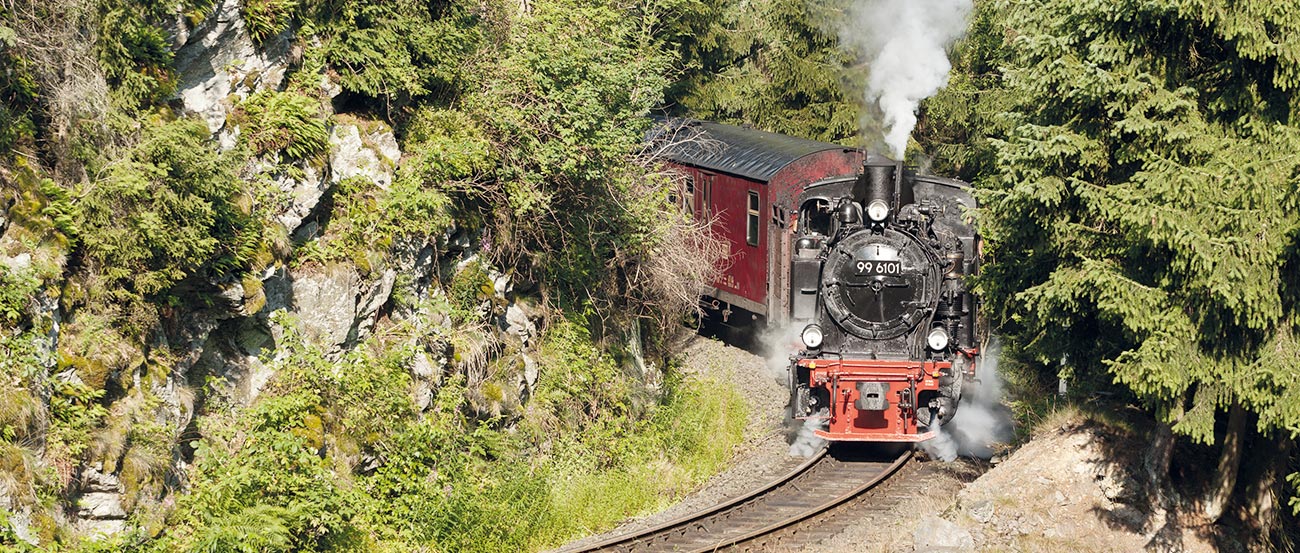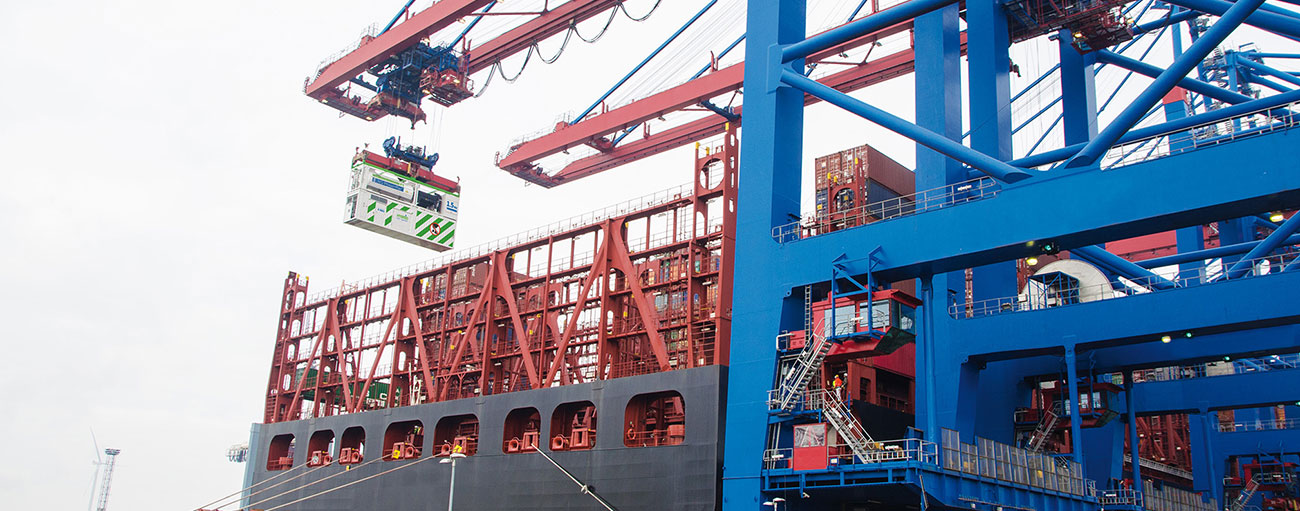Full steam up the Brocken Mountain in the Harz
Wernigerode, Main Station, 14 : 40 pm: puffing and hissing, the locomotive of the Harz narrow gauge railway starts to move. About 120 tons slowly move off. The passengers in the six carriages are looking forward to their destination: the Brocken mountain, which with a height of 1141 metres is the highest point of the Harz region.
HEROSE supplies valves to the Harz Narrow Gauge Railway for safe braking systems – in part of the fleet of vehicles …
In the confined driver’s cab, engine driver Thomas Gaede, 33, sounds the whistle before a level crossing. People wave toward the Brocken railway, stoker Sigurd Gumz, 40, is gazing intently through the side window, constantly checking the track ahead. In the driver’s cab, everything is covered with a layer of fine coal dust. This is a workplace for men.
After four stops at intervals of one minute, the locomotive picks up speed. The route passes through increasingly dense forest and the track runs uphill. The smell of pine trees mingles with the smell of coal and the views become increasingly spectacular. “Sigurd, you’ll have to throw on a few more coals!” shouts engine driver Gaede to his stoker – and at the same moment he opens the fi redoor of the boiler. Swathes of heat from the deep red embers immediately force their way into the cab. “In summer it can get up to 40 degrees in here”, says Gaede.
Gaede’s steam engine, series 99.72, is one of 30 locomotives, which the Harz Narrow Gauge Railway (HSB) use on their 140 kilometre railway network. In addition to the Brocken railway, the route which is the greatest tourist attraction, the HSB maintains public passenger and goods transport in the Nordhausen area. Here, diesel locomotives are used – and that is where HEROSE comes into play. Manfred Kadner, who is the HEROSE representative for Northern Germany: “For many years now we have supplied HSB with safety valves for the braking systems, in which the braking pressure is built up. These valves are installed between the compressor and the pressure reservoir and have to be tested every two years.” Bernd Seiler, head of the Vehicle Engineering department of the HSB adds: “The diesel locomotives, which were built in the days of the GDR are nicknamed Harz camels, because they swing with their very own rhythm.”
HEROSE valves are also used in the braking systems of an historic HSB vehicle, the T1 railcar. Bernd Seiler: “This vehicle was built in 1933 in the carriage factory in Dessau and after the War, it was used on our Selke Valley railway between 1947 and 1950. Then the T1 was forgotten, until it was restored in 1990 and can now be booked for special excursions.”
However, back to the series 99.72 locomotive: stoker Sigurd Gumz has now thrown on more coal with his practiced swing. Ten shovels full last for about five minutes. Then the boiler needs more fuel. “This is my gym” says Gumz and grins. The gradient becomes steeper and the locomotive slows down. The speedometer now only shows 25 km/h. Regulators, gate valves, injector pump, heater valve, blowers – the driver’s cab is a dream for nostalgia fans. “The locomotive still does what the driver says”, laughs Gaede – even if this means good old heavy work for the pair at the front. The indicators have to be continuously watched – as well as the track and the signals.
After 40 minutes, the train reaches the “Drei Annen Hohne” station. They jump off the locomotive to take on water. Here they take on five cubic metres. They will take on another two later in Schierke. A break. Gaede and Gumz eat two sausages, which they have roasted in aluminium foil on the boiler. They love working on their locomotive.
Off again. Thomas Gaede carefully moves the regulator, so to speak the accelerator pedal of the locomotive. “If you take off with a flying start, the last carriage jumps forward by a few metres” says Gaede, “we don’t want that”. Things become quiet in the cab – at least as quiet as things get on a steam engine. Outside, the Harz passes by. The view into the North German Plain becomes increasingly expansive. In places the narrow gauge track runs right next to the footpath, which also leads up the Brocken mountain. Walkers wave and take photographs. After one final loop, the train has reached the peak of the Brocken. Now the driver and the stoker can take a rest for about 15 minutes, before they start back on the 34 kilometre route, for which the train takes about 1 1/2 hours.
HEROSE valves in use
Photo at the top: Daniel Kühne – Fotolia.com










